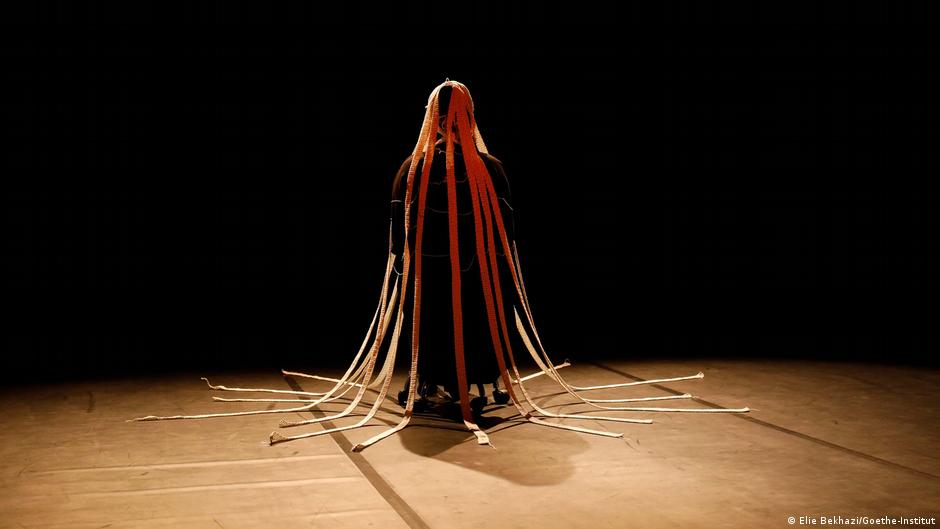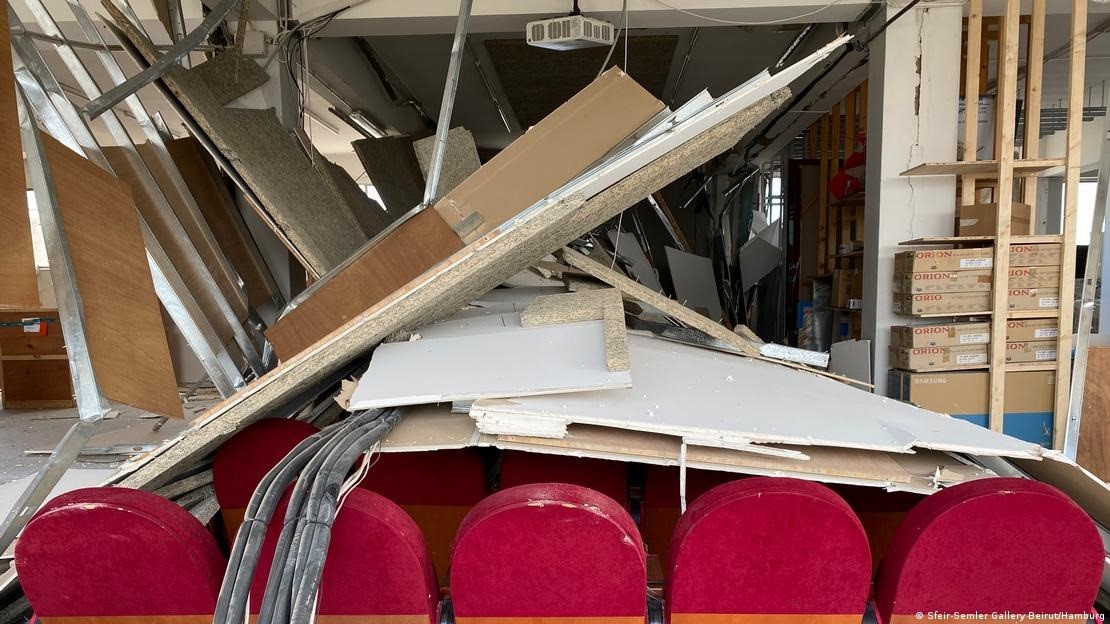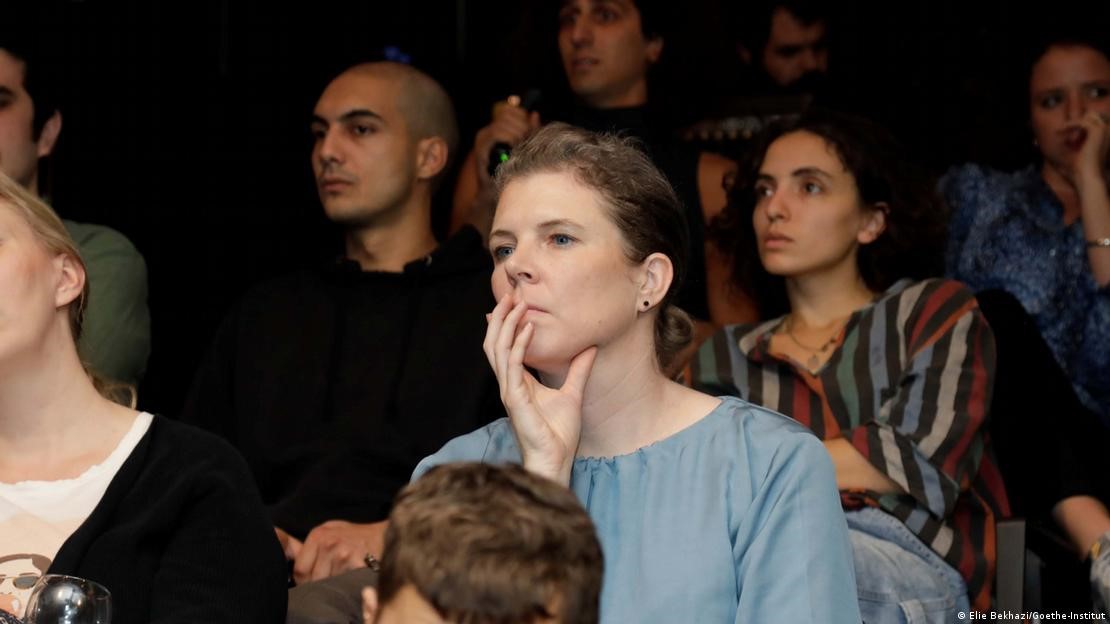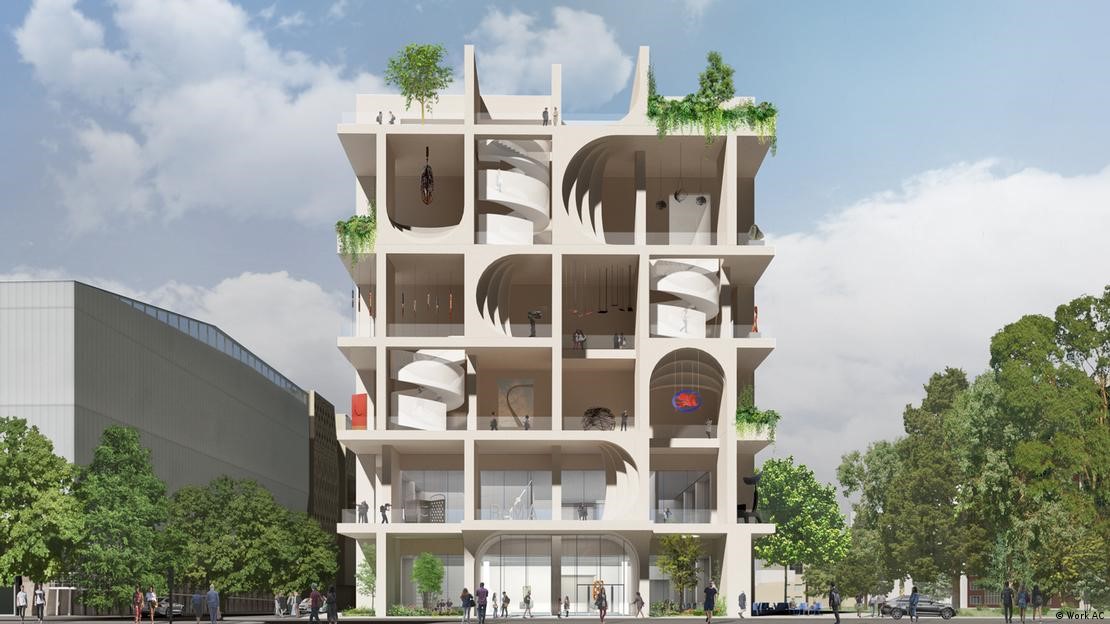Rebuilding Beirut's cultural life

More than 200 people were killed and large parts of the city devastated when close to 3,000 tons of ammonium nitrate blew up in Beirut on 4 August 2020. The blast wave was so strong that – according to UNESCO – around 640 historic buildings were impacted. It was yet another disaster for a nation long marked by civil war, political crises and economic decline.
Many cultural sites were severely damaged by the explosion, including the Nicolas Ibrahim Sursock Museum, Lebanon's oldest independent cultural institution. But after almost three years of restoration work – helped with over $3 million (€2.7 million) in support from France, Italy and UNESCO – the building was able to re-open in May 2023.
"A miracle and a sign of hope," said Klaus-Dieter Lehmann, former president of the German Goethe Institute and the Prussian Cultural Heritage Foundation, of the re-opening. The Sursock Museum had for decades been an "anchor for Lebanon's cultural scene and a showcase for the country's art production," he added.
The explosion struck at the heart of cultural life in Beirut, which was once dubbed the "Paris of the East". In the Gemmayze and Mar Mikhael neighbourhoods, many cafes, alternative spaces for poetry slams or small live concerts, as well as design studios for jewellery, furniture or clothing, were destroyed. But for Sursock Museum director Karina El Helou, the restoration of the institution has become a "symbol for the continuity of cultural life in Beirut".

"The explosion destroyed a great deal," recalls German-Lebanese art historian and gallery owner, Andree Sfeir-Semler. "Many musicians lost their instruments; many painters their works of art."
Stay or go?
Sfeir-Semler is a specialist in Arab contemporary art and runs – in addition to her gallery in Hamburg, Germany – an artistic branch in Beirut. Her exhibition rooms at the port were completely destroyed in the huge August 2020 explosion. To this day, it remains unclear who was responsible for the disaster.
"Lebanon's art scene still exists, but it exists less and less in Lebanon," Lehmann adds, referring to the growing exodus of creative artists due in large part to economic crises and corruption.
Anne Eberhard, director of Germany's Goethe Institute in Beirut, explains that "Beirut's cultural scene is now spread all over the world". Large diaspora communities have emerged in France and Germany in particular, she says, adding that "Berlin is increasingly becoming a kind of Arab cultural capital".
In Beirut, meanwhile, many cultural institutions have given up or downsized as the economic divide between rich and poor in the country continues to grow, notes Eberhard – and where one in five people are a Syrian refugee. Indeed, culture has long been impacted by both economic and political instability dating to when sectarian groups divided power among themselves after Lebanon's 15-year civil war.
"Art and literature became increasingly politicised and ideologised," noted Klaus-Dieter Lehmann.

Support for young artists
Despite these barriers, art and culture are once again playing a central role in Lebanese life as emerging artists perform on the streets, in refugee camps, or organise festivals in the provinces, Eberhard explains. The Goethe Institute helps financially with such artistic projects, providing "structural aid" where there is a lack of state cultural funding. The Goethe programme "ArtEvolution", for example, supports young Lebanese artists in their own productions.
Artistic independence is vital to this cultural work. "Lebanon's contemporary art," said gallery owner Sfeir-Semler, "is the only entity today that doesn't depend on one of the 18 religious communities in the country." In Beirut, she says, a certain tolerance still exists. "Why is there such an art scene in Lebanon and not in Syria, in Egypt, in the Gulf states?" the art expert asks. "Because there is no Arab city where people are as free as in Beirut."
Giving further hope to Beirut's cultural life are plans to build the Beirut Museum of Art, or BeMA, by 2026. Located near the National Museum that preserves the country's archaeological treasures, and in the vicinity of the new Beit Beirut cultural centre, BeMA could house the collection of the Lebanese Ministry of Culture.
The approximately 2,300 works of modern and contemporary art by predominantly Lebanese artists are currently still stored in depots and – according to newspaper reports – are in a miserable condition: holes in canvases, works covered in dust and mould, broken sculptures. The civil war has also left its mark here.

A fluid and transparent building design by Amale Andraos, a Lebanese architect living in the USA, has been chosen for the new museum. The facade of light consists of inviting open balconies that open a view into the interior. Private donors have already raised part of the $30 million (nearly €27.5 million) that the BeMA is expected to cost. The foundation stone has recently been placed.
And yet the deteriorating situation in Lebanon has led to a rethinking of the project. "The past few years have been a roller coaster ride," Michele Haddad, one of the BeMA directors, said in Germany's Frankfurter Allgemeine Zeitung daily.
"How to find the architecture of the new museum, what will go in there, where the artworks will come from and who will pay for it in the end, we'll have to see to all that," said gallery owner Andree Sfeir-Semler.
"But it's definitely better than nothing," she added.
Stefan Dege
© Deutsche Welle 2023